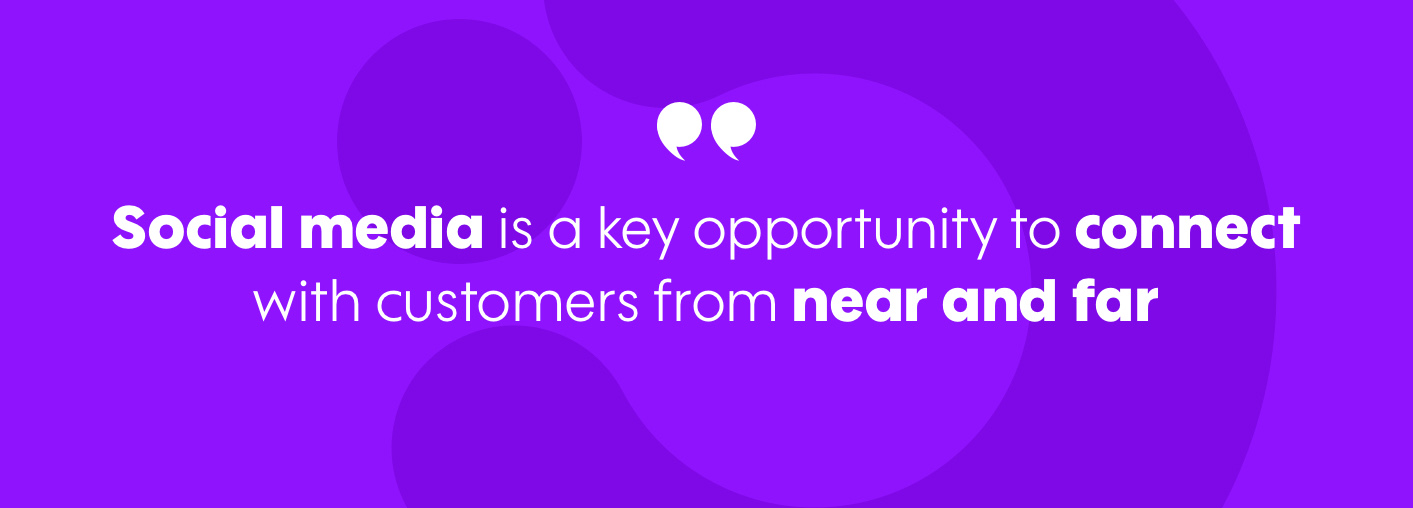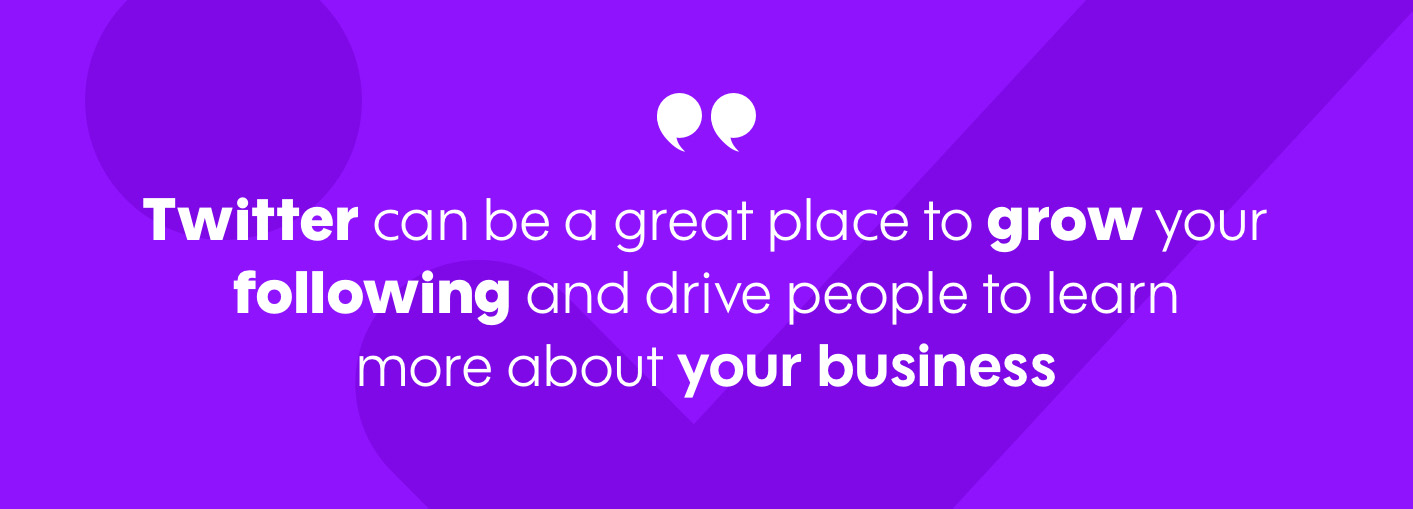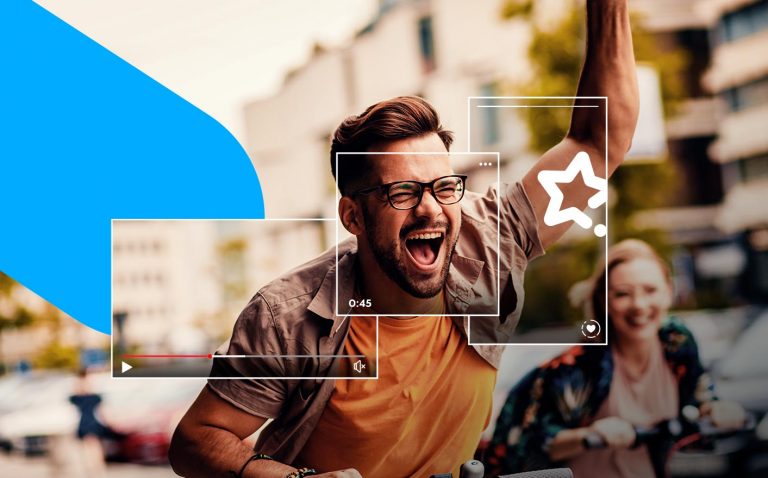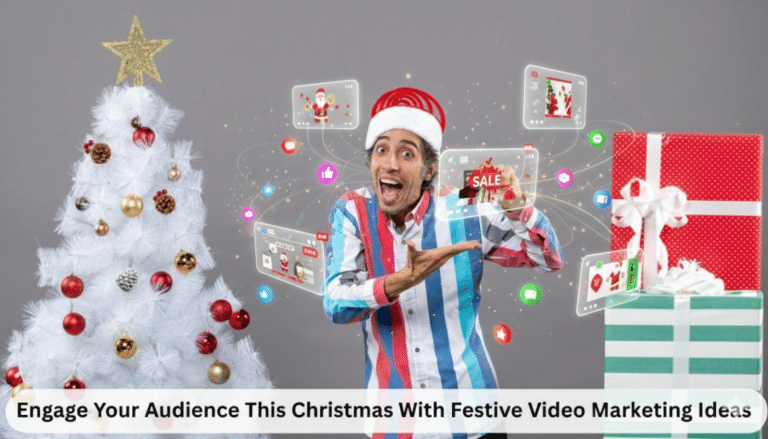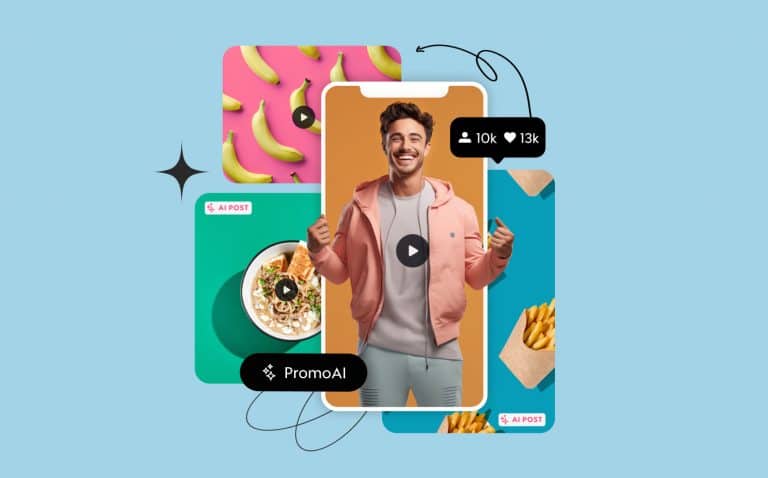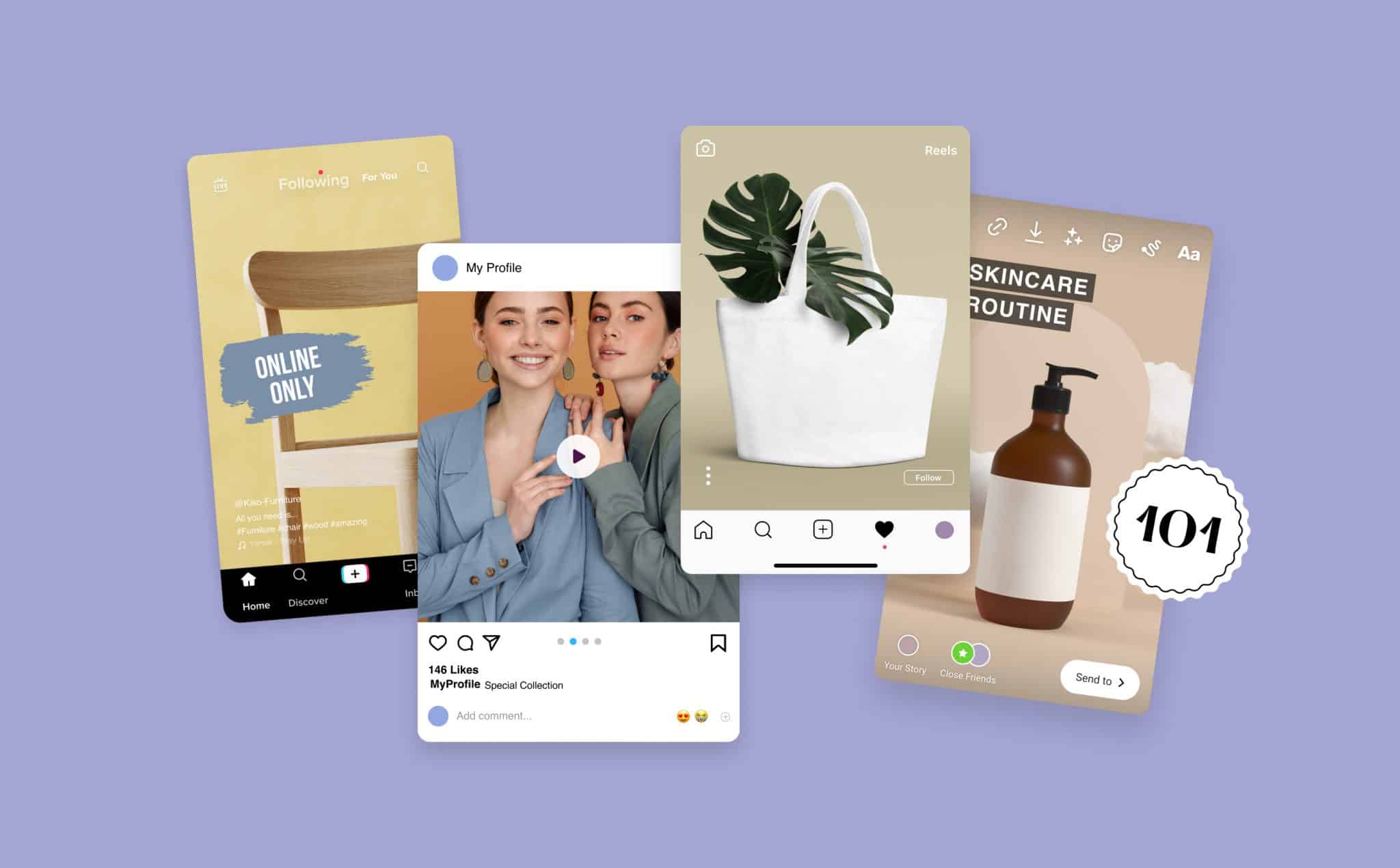
Social Media Marketing 101: Your Guide to Getting Started
There’s no denying that Social Media is one of the most effective and accessible ways to market your business. Not only is it a space where small and medium-sized companies can compete alongside larger businesses on a relatively equal playing field, but social media platforms also provide all-in-one access to all demographics, giving businesses from all levels a chance to grow.
Whether you’re selling customized products, offering a service, or even an online course, there’s an excellent opportunity for you to get discovered and expand your reach.
The secret to making social media marketing work for you depends on various factors such as the angle, approach, and platform you use. Keep reading to find out how you can get your social media marketing game on and find out what platform works best for you!
The Benefits of Using Social Media Marketing
Social media marketing is the exposure of your brand or business on digital marketing channels, such as Facebook, Instagram, TikTok, and YouTube. These platforms are marketing tools to highlight your offerings and brand voice.
It’s safe to say that social media users go on their favorite platform to engage with friends, check out content creators, follow brands, and read up on their favorite celebs. An average person spends around 145 minutes on social media daily, according to a 2020 Statista survey.
Apart from that, there are around 4.88 billion social media users worldwide; multiply that by 145 minutes, and you have a pretty accurate picture of why investing in social media marketing will only do good for your business.
Showcase Your Products & Services
Nowadays, people like getting up close and personal with brands and influencers on a fundamental level. Social media platforms provide live features where you directly engage and show your audience anything that could pique their interests. Whether it’s showing your latest restock of your customized resin art or talking about the new property listings in your area, there are various methods to get personal with your followers.
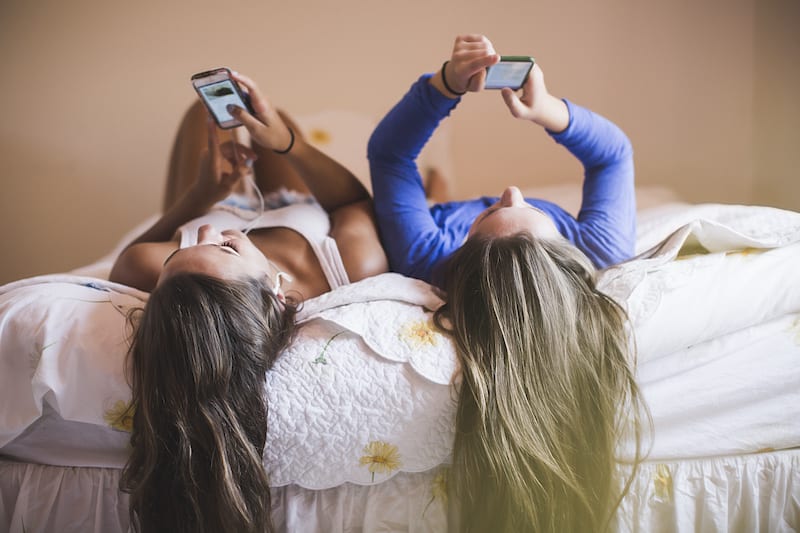
Growth and Brand Awareness
The more people know about your business, the more product or services you’ll sell. It’s that simple. Social media is a great place to start increasing brand awareness. Whether selling a product, offering a service, or simply sharing content, social media will help grow your brand awareness by reaching an audience more significant than your customer base.
Target Interest-Based Audiences
You may be surprised (or not so surprised) to learn that we are shown posts based on our interests and what we’ve liked in the past. Social media users can be categorized in so many ways, and that’s a great benefit as you can pinpoint an audience interested in your particular niche or industry.
We’re all different and have various likes, interests, and passions. While Mike may be into science and sports blogs, Janet follows fashion and DIY communities. Social media platforms use an algorithm that picks up users’ interests and exposes them to the same niches and interests from profiles they don’t follow. Janet, for example, will see many more fashion-related posts on her Facebook newsfeed since she follows, engages, comments, or likes certain fashion pages.
Improved Customer Retention
Social media helps boost your retention efforts tenfold. If you are offering a new sale or have a brand new seasonal product, social media is the best way to let your customers know what’s hot and happening, keeping them coming back for more.
Direct Channel to Your Audience
The best way to know your audience is by seeing their journey and actions on social media. By monitoring who follows you, you may be surprised to find that a new audience is interested in your products. Also, social media is a brilliant way to directly speak to your clients or followers, where you can gain insights just from the questions they ask you.

Garner Reviews
Online client reviews are the new word-of-mouth, and receiving many positive reviews can benefit you in many ways. For one, your new followers will have the impression that you’re a solid brand that provides the best service and/or products.
Getting Started With Social Media Marketing
Opening accounts on social media platforms are the easy part; actively posting and engaging with customers is the crucial part where most businesses encounter difficulty. Once you have thought about the type of commitment you’re willing to put into these channels, you’ll want to strategize ahead of time and come up with a plan of action so that you can organize your messaging, posts, images, and ideas in advance. These strategies can usually be developed with the in-house marketing team or with a marketing agency that has experience within the vertical. The strategy is the main foundation of how you want to create your social media marketing plan.
Why Create a Social Media Marketing Plan
Small and medium-sized businesses should have a clear direction when planning their social media. While time and resources may be limited, it’s always helpful to understand what content you want to post, where, and when. Creating a social media marketing plan will help you:
Save Time
When you have a monthly working plan set out for you, you’ll be able to schedule these posts in advance and not have to stress about manually posting on a specific day or time.
Allows Consistency
If you’re aiming at posting five times a week, having a plan in place will allow you to stick to your consistency level effortlessly. Brand credibility is a big deal; people like to follow trustworthy brands, so to do that, you’ll want to post engaging and relatable content constantly.
Collect Important Metrics
Scheduling content gives you a birds-eye-view of your performance. When you regularly schedule content at different times of the day, you’ll be able to deduce what time slot is the best owing to the level of engagement and even link clicks. For example, think about Facebook; according to research, the best time to post is Wednesday, at 11am.
The 4 Steps to a Creating Social Media Marketing Plan
Considering the points mentioned above, there are various steps to take when creating your social media marketing plan. Whether you’re planning one month or one week in advance, here are some suggestions and tips for making quality posts
1. Research
Research is essential; you’ll need to figure out your audience, research what your competitors are doing, and determine how you can be different from the rest. Knowing your niche is the baseline you should carry when creating a plan.
Next, seeing what your competitors are doing will give you a pretty good indication of what’s working and what isn’t. You can identify fundamental content structures that resonate well with your audience. Come across a competitor with a large following and a good amount of likes and comments on their posts. Now, the aim is not to copy what they are doing butto understand what content is most liked and how you canimprove itr. Suppose you’re in the real estate business, and your competitor is amassing quite a few likes on detailed property listings. In that case, you could take things to the next level by making a video showcasing the property’s essential features, thus leaving your followers with a feeling of wanting to view the whole house.
2. Draw Up a Content Plan
When you have an idea of what content you’d like to feature on your social media platforms, the next step would be to draw out a plan.
Consider the following when drawing up your SMM plan;
- Ensure your followers stay updated with promotions, new products, and services.
- Take important dates into consideration. Apart from the big ones such as Valentine’s Day and Christmas, look around at other dates that could relate to your brand and niche. Yoga studios can make catchy content that ties in with World meditation day and fun themes such as “Workout Wednesday” posts. Inspirational posts on days like “Martin Luther King JR day” would be an excellent approach if you’re more of a one-person show, such as a life coach. If you want to be clued up on these fun days, check out Promo’s social media calendar here; you’ll get a monthly view of all the trends and important dates to take your content to a more relatable level.
- Think of posts that social media users can engage with. If you’re a small business that sells gourmet donuts, you can ask them to name the new donut collection. Or, if you’re involved in lifestyle and travel, asking your followers to share one place they need to see in their lifetime will also increase engagement.
- Offer a behind-the-scenes glimpse of your business and the people behind the brand. Consider posting Employee of the month or showcasing how you package your ready-to-be-shipped products. These posts greatly enhance brand credibility and show how hard and severe you are about your brand.
- Sharing your blog posts and industry-related news is an excellent and catchy method of keeping your followers up to date. This works exceptionally well with niches impacted by global issues, such as pandemic regulations and even weather conditions. Think of travel agents and tour companies; sharing aviation-related news on red zones and the new rules are a great way to keep your followers hooked.
3. Identify Success Metrics
Determining the success of your social media marketing efforts will give you great insight into what your followers enjoy and how you can improve your plan.
Here are a few to look at:
- Likes – If your how-to videos are raking it up in the “likes” arena, perhaps it’s safe to say that this is the type of content your users enjoy the most. If your inspirational quotes only get a handful of likes, perhaps this is not the direction you should pursue.
- Engagement rate – Engagement rate portrays how your audience is involved with your content. This metric takes likes, comments, mentions, and shares into consideration. If your engagement rate increases, you’re probably reaching more potential customers.
- New followers – How many new followers do you have every month? Remember, only the best, most relatable content is shown on discovery pages, and if you can get yourself in there, you can expect a whole stream of new customers. I
- Conversions – At the end of the day, the top aim of social media marketing is to get followers that convert. If you notice many more modifications coming from social media channels, it’s safe to say you’re doing something right! In a 2021 survey, 18.9% of small businesses worldwide think social media marketing is most effective in driving sales.

4. Analyze and Optimize
Let’s be realistic, there’s always room for trial and error, and that’s no exception in social media. Evaluating the metrics and analyzing the setbacks will give you more incredible momentum in formulating a formula that works (content-wise). There will be tweaks along the way, and optimization will give you a much-needed boost.
Choosing the Right Social Media Platform
When you have a marketing plan in mind or an indication of the approach you want to take, you can look into all the social media platforms and see which one(s) are the best fit for your brand, tone, and audience. It’s essential to also be mindful of the type of content you want to post and how it will tie in best with a specific platform.
Let’s take a look at the most popular social media platforms:
Because of its broad appeal, Facebook has attracted a significant user base over the years. It’s been around the longest and has paved the way for the conception of other social media platforms. Even though it’s the oldest, it still boasts around 2.9 billion active users; that’s a pretty large audience to be exposed to.
Their ad targeting feature used to be above any other platform. Still, thanks to the rollout of Apple’s IOS user privacy and data use, not all audiences with Apple can be targeted or accounted for. Nevertheless, it’s still a mainly used platform, with 69% of U.S adults actively using it.
Getting Started on Facebook
Opening a Facebook business page is relatively simple. You can also link it to your personal profile and assign others as admins. In addition, you can connect your Instagram business profile to your Facebook profile, thus opening many avenues for cross-posting and even cross-messaging.
What Content Works Best?
As with other social platforms, the best content for Facebook is creating stunning videos. From how-to’s to fun industry tips and product updates, people are likelier to watch at least the first few seconds of your video rather than a still image. In fact, it’s been reported that vertical videos get the highest engagement rate, more so than landscape or square formats.
Don’t be discouraged by this statistic; while many small businesses may not have the financial means to hire a video editor, there’s a user-friendly tool that does the job for you effortlessly. Promo.com is a video maker that lets you use unlimited media to compile a winning social media video to share on your profiles.
Facebook Business Page Main Elements
Facebook business pages can give much information about your business or brand. Here’s how you can maximize these features in your favor;
About Section
The “about” section is similar to your website’s “about us” page. Like your website, visitors to your Facebook page will click here to learn more about your business. Populate this area with brief, factual information about your business. For instance, adding your mission statement is a great way to introduce yourself and communicate why they should choose you to your customers.
The “contact info” section is great for dropping your website link and any relevant contact information, such as store address and hours. Here you can also add your WhatsApp Business Platform link or a chatbot link so that visitors can click and start the chat.
The “story section” is an opportunity to give your customers insight into your business. What exactly do you do, what is your specialty, and what is the culture of your company?
Facebook Messenger
Facebook has a built-in messenger which allows customers to contact you directly. You can set up auto-response messages when got, which can direct customers to your website, email address, FAQ, or more. However, Facebook does rate your responsiveness to customer questions, so someone must be paying attention.
What’s more, Facebook’s messenger is linked to Instagram’s direct messaging; like this, you’ll be able to stay on the ball and be notified when a client contacts you, irrespective of the platform.
Another great feature that’s been deployed by Facebook is its end-to-end encryptions. In plain terms, only the giver and receiver will see the messages. You’ll also be notified when a sender takes a screenshot of the chat. This will secure your messages and media from falling into a third party’s hands. You can easily enable this feature through your messenger settings.
When and How Often to Post on Facebook
The biggest question most businesses have is when and how often to post on their Facebook business page. The basic answer is this: post regularly. If that’s once a day, that’s great. If that’s twice a week, that’s fine as well.
Generally speaking, you’ll want to post at least a couple of times each week and stick to a regular schedule. The reason for this is to spread your message, cultivate fans, and have them get familiar with seeing consistent updates from your page.
Check out the table below to see the best reported times to post on Facebook. In a nutshell, the best days are Tuesday, Wednesday, and Friday, with the worst day being Saturday.
Commenting
Half the point of owning a Facebook business page is to engage with your fans. As your followers engage with your content, they will ask questions, have ideas, and, yes, even complaints. Don’t forget this crucial component.
You will want to acknowledge and address comments in a timely fashion. Even and especially the bad ones. You will want to “like” the comment and respond if the comment is positive.
If the comment is negative, such as a complaint about a recent purchase, you’ll still want to respond. However, rather than try to hash it out “in public” on your page, politely apologize for the inconvenience and ask the customer to contact you via email or messenger so that you can look into their concern and assist them further.
Organic vs. Paid Content
Your Facebook page aims to generate awareness, drive traffic to your website or app, and ultimately create customers. There are two basic ways to do this. Organic traffic and paid traffic.
Organic traffic is an activity that comes to your page through non-paid means. This can be customers searching for your page or coming across it because they saw a friend sharing your content. However, the organic reach of your content is limited to your existing followers and anyone they may have shared it with The more prosperous and entertaining the content, the more likely viewers will share it among their circles..
For that reason, paid traffic is required to enhance your reach and spread your content beyond the bounds of your existing follower count. Paid traffic comes from boosted posts and ads, which is critical in reaching new and larger audiences.
The proof is in the pudding here; 70% of marketers use Facebook ads to market their product or service. Using a combination of both organic and paid outreach is a full-proof way to get the ball rolling.
Facebook Ad Types
Facebook allows for several ad formats. Photo, video, collection ads, and carousel ads. Each ad type will enable you to select a campaign objective to generate awareness, driving traffic to your website or conversions.
Video ads range from short, mobile ads to long-form presentations. In general, short, direct videos are the most successful, and 81% of marketers actually prefer video ads to photos or carousels. It’s essential to understand your goals and audience when deciding which ad type works best for you and you can always have a look at the Facebook ad library for inspiration.
Facebook Features
1. Facebook Live
Facebook Live is a video function that allows you to stream live videos to your fans and present them on your page. This is great for live events, countdowns, or special promotions. Facebook live is also suitable for tutors, influencers, coaches, trainers, and even businesses who want to show how they make a particular product.
Another feature, Facebook Premieres, allows you to present pre-recorded video content as a Live video event. This is great if you’re hosting a talk and have multiple guests. You can also edit these videos on Promo to make them look more professional with your company’s logo.
2. Facebook Events
Facebook Events allow you to create, schedule, and invite people to an event. This can be a grand opening, a Facebook live event, a sale, or even a regular event such as Happy Hour. Facebook Events is capable of syncing with the calendar on your smartphone. This means that when customers show interest, Facebook will remind them.
Another benefit of Facebook events is anticipating how many people will be attending the said event; like that, you can get a somewhat clear understanding of who is coming, how many people to cater for, and so forth.
3. Facebook Groups
Facebook Groups are private or public groups where individuals “meet” to discuss and engage around a specific topic. For your business, it can be a customer support group (valid for tech brands), a place for fans (great for entertainment businesses), or really anything you can think of.
Facebook groups provide a forum for like-minded people to interact with the brand. Think of it as a gathering place for brand enthusiasts. If you choose to create one, appoint someone to monitor and moderate the group.
4. Facebook Stories
Like Instagram, Facebook has adopted the 15-second story trend that can be opened and viewed once a user taps on your profile picture. This is another engaging way to post fun tidbits and exciting content for your fans. As of 2019, over 500 million users watch Facebook stories, so if you haven’t considered it part of your SMM plan, now’s the time.
Defining Goals and Measuring Success
To determine a successful brand presence on Facebook, you can look at the number of page likes/followers and the level of engagement driven by your posts. These followers are more inclined to interact with your content as they have already “liked” your business page. With a larger audience on Facebook that has expressed an interest in your business, your reach will expand organically.
In addition to the number of fans your Facebook page accrues, you can also determine the success of specific posts. A Facebook post’s performance can be analyzed by looking at both engagements and reach:
- Engagements on Facebook include any interaction your target audiences take, such as shares, likes, comments, photos, and link clicks. More relevant and exciting content will produce higher engagement rates as your target market will be more inclined to interact.
- Reach is how many people are exposed to your post. To determine your engagement rate, you divide the sum of engagements/the post’s total reach. You can then multiply by 100 to turn this decimal into a percentage. As a rule of thumb, an engagement rate of 1% or higher on Facebook is considered successful.
Recommended Facebook Photo and Video Dimensions
Profile Photo: 180 x 180 pixels. Displays at 160 x 160 best results when uploading a square image (360×360, 720×720, or 960×960).
Facebook profile picture frame size: 183×183 pixels.
Facebook cover photo size: 828 x 315 px
News Feed link image size: 1200 x 900 px or using the standard Instagram size of 1080 x 1080 will also work just fine
News Feed link image ratio: 4:3
Desktop news feed display: Up to 470 x 470 px
Mobile news feed display: Up to 626 x 840 px
Right column image size: 254 x 133 px
Text: Desktop news feed displays 500 characters, mobile 110 characters, right column, ad 90 characters.
Video: The ideal file formats are MOV or MP4. Whether posting native video or video ads, the preferred dimension is 720p (frame size of 1280px wide by 720px high).
Facebook Demographics
- 56% male, 44% female
- The largest age group of users is between 25 and 35.
Ready to begin? Check out our Facebook Advertising Guide!
Instagram has fast become a platform for short-form visual content, and a top contender for growing your customer base. Unlike Facebook and Twitter, where you can post simple statuses and discussions, Instagram is powered by visuals, videos, and hashtags as a means of gaining a following. According to the platform, around 90% of users follow at least one business, making it a safe haven for even small businesses to thrive!
Meta owns Instagram, and so many of the tools and principles that apply to Facebook also use Instagram. However, keep in mind that Instagram is a mobile-first application. There is no native desktop interface, so your content needs to be optimized for mobile viewing.
What Content Works Best?
Remember that Instagram is a media-focused platform. Apart from sharing photos, Instagram’s video usage is quickly blowing up thanks to their famous Stories and Instagram Reels features. Instagram reported that 9/10 users watch Instagram videos weekly. So, while adding photos to your profile is excellent, users seek videos to engage with, too.
Adding to that, 25% of Instagram Ads are videos, meaning the video is carving out a large chunk of the Instagram ad space.
When and How Often to Post on Instagram
If you were wondering when is the best time to post on Instagram, you probably won’t encounter one straightforward answer. According to social media management platform Hootsuite, it’s generally considered good practice to post 2 – 3 times a week on your feed and at least once a day on your stories. Keeping in mind is to be consistent, without too many long gaps passing between posts. When it comes to stories, you can let loose, as it’s not uncommon for brands to post up to ten to fifteen stories a day.
According to Later, the best times to post on Instagram as of early 2022 are:
- Monday: 6 am, 10 am, and 10 pm EST
- Tuesday: 2 am, 4 am, and 9 am EST
- Wednesday: 7 am, 8 am and 11 pm EST
- Thursday: 9 am, 12 pm, and 7 pm EST
- Friday: 5 am, 1 pm, and 3 pm EST
- Saturday: 11 am, 7 pm, and 8 pm EST
- Sunday: 7am, 8am, and 4pm EST
Of course, these are just recommendations. If you see that certain hours work best for your brand, continue posting at those hours!
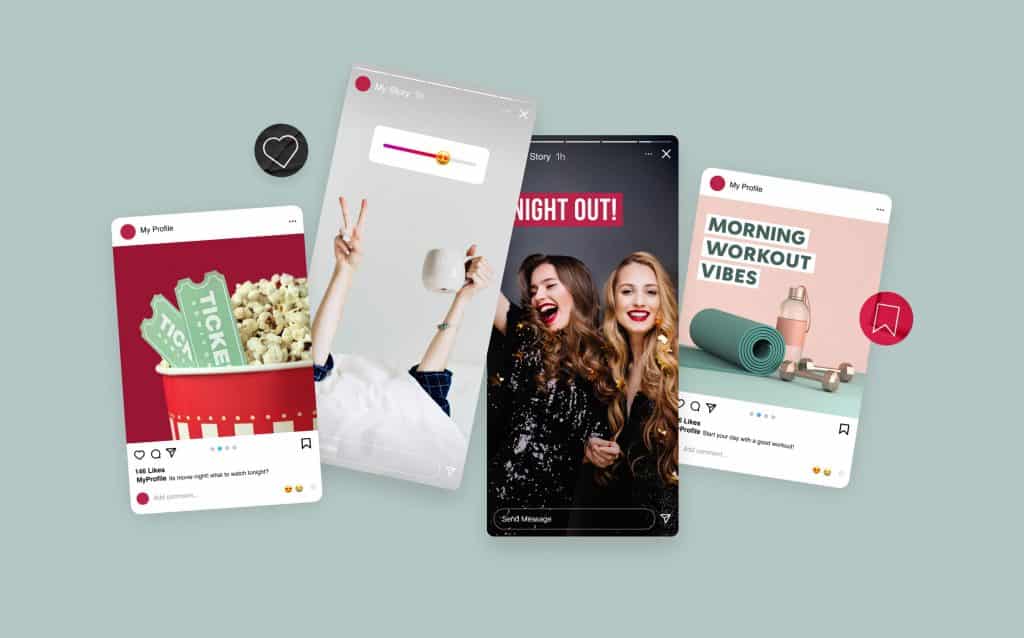
Organic Vs. Paid
As with Facebook, you can boost your content and run ads directly on Instagram. Also, like Facebook, a solid strategy is to push content naturally and organically while also supplementing it with paid advertising options.
Instagram Ad Types
The primary option for Instagram Advertising is video ads promoted on Instagram stories. By advertising on Instagram stories, you have the opportunity to reach individuals who are actively using one of the most popular features of Instagram. Like Facebook, there is also the opportunity to boost a post to further its reach.
Instagram allows you to set an ad budget just like Facebook, so you don’t have to worry about overextending your budget. Other than stories, you can also opt for carousel ads, explore page ads, shopping ads, and even Reels ads.
Instagram Videos
There are four video formats on Instagram, Stories, Reels, Live, and Instagram video. All four are placed in different sections, and they all serve a purpose – to create high engagement by posting likable content.
-
Instagram Videos: Instagram feed videos have replaced IGTV. These videos are posted the same way images are posted and appear on your follower’s newsfeed. Videos can be up to 60 minutes.
-
Instagram Reels: 15-1 minute long videos inspired by TikTok. There are AR filters, a music library, green screen mode, and speed controls features to use, too.
-
Instagram Stories: These are 15-second-lon videos. After 24 hours, they disappear but can be saved to the highlight section of your profile.
- Instagram Live: Video streaming is a big bonus for brands, especially when going remote. Instagram live videos are deleted after 30 days and shared before deletion.
Using Hashtags on Instagram
Instagram’s hashtags work the same way that Twitter hashtags do; to organize content. By marking a post #videomarketing, you manage that content with the rest of the content that uses that hashtag. So if you’re interested in #Christmas, you can organize all posts that use that hashtag for easier viewing.
Hashtags are great for businesses and marketers who want to align their content within their industry. It also works to take advantage of trending topics such as special events, holidays, and more. Ensuring that your content is relevant to the particular browsing audience is crucial. If you’re using the hashtag #yoga, but your content is about cross-training, your hashtags are irrelevant to the yoga browsing audience.
Linking from Instagram
Instagram does not allow you to post clickable links with your content. However, you are able to post a link in your bio. Use this space wisely and link directly to your website or app download page. Additionally, there are many services such as Linkin.bio that recreate your Instagram profile into clickable content. It’s easy to set up, and all you need to do is add your unique like to the bio section of your profile.
Up until October 2021, adding links to stories was only available for profiles with a 10 000+ following. Instagram did away with this rule and has allowed any profile, irrespective of follower size to take advantage of this.
Defining Goals and Measuring Success
Similar to Facebook, you can look at both follower count as well as engagement when determining success.
The engagement rate of an Instagram post is also calculated by dividing the number of engagements by the total reach. Once you determine this number, you can multiply by 100 for a percentage. This will reflect how many people interacted with your post out of the total number of exposed people. The nature of Instagram’s platform promotes higher engagement, resulting in a target engagement rate of 3%.
Instagram Photo and Video Dimensions
Instagram will allow you to post photos and videos in many sizes. However, the ideal Instagram video formats and dimensions are as follows:
Profile picture: Optimum size : 110px x 110px, maximum resolution: 180px x 180px
Published Photos:
- Square size recommended: 1080px x 1080px . Max resolution: 2048px x 2048px.
- Landscape size recommended: 1080px x 566px.
- Portrait size recommended: 1080px x 1350px
Videos:
- Timeline video: Recommended resolution: 640px x 640px and the duration should be between 3 and 60 seconds.
- Video to Instagram Stories: 750px x 1334px.
- Video to Reels: 1080px x 1920px
Video Ads:
- Square ad: 1080px x 1080px. Note: it will appear as 640px x 640px.
- Landscape format: 1080px x 566px. Will also appear as 640px x400px.
Instagram Demographics
64% of Instagram users are aged between 18-34 years of age.
Ready to begin? Check out our Instagram Advertising Guide!
TikTok
Owned by a Chinese company, TikTok has quickly risen to fame in a short period (the app became global in 2017). It boasts more than 1 billion monthly active users and has quickly garnered popularity worldwide.
TikTok’s main feature is video curated content between 15 seconds to 3 minutes long. There’s also a selection of music to add to your videos and a choice of stunning AR filters.
TikTok is a video-sharing app that features content on all interests. There’s a whole new world of things to see and learn from how-to videos, gaming videos, and even house cleaning tips. Like Instagram, TikTok is mainly used on mobile with restricted access to features via desktop.
Getting Started on TikTok
Getting started on TikTok for business isn’t hard at all. Download the TikTok app from the Apple App Store or Google Play store. Click “Sign Up” to register with your phone number, email address, or social media account. Once you’ve downloaded the app, you can open it and tap “Me.”
To create a business account, tap “…” on the top right of the “Me” page, “Manage account,” and select “Switch to Business Account.” Choose the category that best represents your business to receive customized content, events, and solutions.
What Content Works Best?
While TikTok is home to a plethora of content, certain content will make your brand stick out while using the platform. You can show behind the scenes the making of a product. Explain the process of developing a new product or service. With TikTok, getting personal is a must. Tell your company’s story, tell a story of how the company came to be. Or how a specific product or service was developed. Tell viewers the problem you are trying to solve and the solution you want to give to your customers.
For You Page
Otherwise known as #fyp, TikTok’s “For You Page” (FYP) is the same as Instagram’s discovery page. Interest-related content can be found here, as well as content from creators who match your Geo-location. Any TikTok creator’s aim is to be featured on the FYP discovery page as it’s a brilliant way to gain followers and collect a whole lot of likes. So, how do you increase your chances of being featured on their FYP?
- Trending Music – Using TikTok’s audio library is an excellent way to push the algorithm to feature you on the FYP. You can easily find the trendiest music in the audio library and use it as part of your videos.
- Hashtags – Like Twitter and Instagram, TikTok also uses hashtags to categorize content according to interests. To understand the popularity of a hashtag, simply type “#” proceeded by a keyword. You’ll be able to deduce how popular a hashtag is based on the number of searches. It’s advisable to use hashtags that are not as popular as the odds of landing first are pretty low.
TikTok Ad types
Now that TikTok has made a strong worldwide presence, they have a couple of creative ads to offer marketers:
- In-feed ads – These are video ads displayed inside the native FYP feed.
- Brand Takeover ads – These video ads pop up when a user opens the app. They are shown for a few seconds and then become an in-feed ad.
- Top view ads – Quite similar to brand takeovers, top view ads appear after the first in-feed post, within 3 seconds.
- Branded hashtag ads – This is a fun way to get awareness on a certain hashtag. Most brands use this as a challenge, asking viewers to film themselves doing a dance or something related to the product.
- Branded effects ads – If you want to create your own custom filter, then getting brand exposure through filters is another type of genius TikTok ad type.
Defining Goals and Measuring Success
Like other video-sharing hubs, TikTok metrics focus on watch time, engagement, and likes. When you go to their analytics dashboard ( you need to have a business account to do this), you’ll see four categories. Each category gives you a detailed overview of your performance;
Overview– See up to two months of analytics, including Total video views, profile views, likes, comments, and shares.
Content – Here, you can see your most popular videos within a custom date range. This delves deeper into each videos’ unique analytics, such as likes, comments, and shares.
Followers– Here, you’ll better understand who your followers are. This includes their location, gender, age. Also, you can understand when your followers are most active, giving you a good indication of when to post.
LIVE – If you’ve hosted any live videos, then you can get a full breakdown of how it performed. Note that these metrics are available between a 7-28 day timeframe.
TikTok Video Dimensions
Videos should be:
- Filmed in on your phone
- For best results, dimensions should be 1080px x 1920px
- Android users can upload up to 72MB & IOS is 287.6MB
TikTok Demographics
- 25% of U.S TikTok users are aged between 10-19, and the 20-29 age range amounts to 22.4%
- Globally, 41% of users are between the ages of 16-24
Twitter is a fast-paced, micro-blogging site with a limit of just 280 characters. It’s great for quick bursts of information or to post links to content that is housed elsewhere (ie, your blog or press). Most businesses can certainly find success from marketing on Twitter, especially if their content is capable of sparking widespread discussions. To put things more in perspective, 17% of U.S-based Twitter users get their news from Twitter, meaning that users use the platform to be informed about areas that interest them.
While Twitter has around 211 million users daily, most users still look to it as a discussion opener. In fact, 93% of Twitter users are happy to hear from brands in conversation threads, especially regarding assistance and support. However, it’s not the best place for lengthy engagements or building a community. Leverage the benefit of Twitter automation to get the most out of your efforts.
One of the best things about Twitter is its relatively clean and uncomplicated interface. From your main profile page, simply select the “Tweet” button at the top right and you’ll be presented with a box just like the one below.
Simply type your message (or add a link), and you’re good to go. At the bottom left, you’ll see icons for adding images and video, gifs, Twitter polls, or your location. Don’t forget the hashtags!
What Content Works Best?
Twitter is a fast-paced channel for sharing opinions and easily digestible content. As such, it is not the place for forging deep, personal relationships with customers. Rather, think of Twitter as a scrolling news feed for important information. It’s great for increasing brand awareness and driving traffic to your website or other social pages. It’s not the greatest place for selling directly or for lengthy engagements with customers.
Defining Goals and Measuring Success
Defining success on Twitter should be measured by two key metrics: follower count and engagement. There are other metrics to pay attention to, such as your average engagement per tweet, the makeup of your audience, and more.
Twitter Dimensions
- Twitter text posts: 280 characters (less if including a link)
- Profile Photo: 400 x 400 (Displays 200 x 200)
- Header Photo: 1,500 x 500
- Horizontal Video: 1280 by 1024 pixels, 512MB max, aspect ratio between 1:2.39 – 2.39:1
- Vertical Video: 1200 by 1900 pixels, 512MB max
Twitter Demographics
- Around 63% are male, while only 36% are female.
- 28.9% of total users are aged between 25-34 years old
Ready to begin? Check out our Twitter Advertising Guide!
YouTube
Once upon a time, Youtube was more to host, post, and browse video content. Today, It’s transformed into the preferred video-sharing service around the globe. From how-to’s to guided meditations, there’s a little something for everyone to browse on Youtube. When looking at the bigger picture, according to Ahrefs, as of 2021, Youtube is the second most visited website in the world. They have also taken user engagement to the next level by introducing a new feature called Youtube Shorts; a medium where viewers can browse fun, quirky, and viral videos up to a minute long.
When it comes to video marketing, YouTube is probably high on your list of sites. There are so many Youtube features that are both engaging and fun, and of course, they can take your SMM to the next level of exposure.
YouTube is a great hosting site for your video marketing content. Regardless of how you plan to use your content, hosting on YouTube is free! It also allows you to save space on your own website. Video content embedded directly on your website may cause slower page loading times which is a major no-no.
Getting Started on YouTube
With a Google account, you’re automatically signed up to a personal YouTube account. To use YouTube for your business, you’ll need to set up a “Brand Account.” But that part is simple. Go to your YouTube account page, click “Create a Channel,” and then enter a name for your Brand Account.
Once you’re in, you can give multiple people admin access and customize the account to match your brand’s name and appearance.
What Content Works Best?
Depending on your brand and business, the type of content you create may differ. Generally speaking, creating gaming videos, vlogs, challenge videos, education videos, and unboxing videos works best. Whatever your business type, there are videos that may be expected of you. For example, if you’re in real estate, you’re most likely going to want to create real estate videos that feature listings, open houses, client testimonials, and more.
Whatever content you create, don’t forget to use eye-catching channel art and create thumbnails that stand out.
YouTube Intros
YouTube intros are short, opening clips that play at the beginning (or close to the beginning) of a YouTube video. They are a sneak peek into what your business channel is about and, with time become your key identifier. These intros are an essential tool for captivating viewers, keeping them on your video channel, and converting them to subscribers. Along with audience captivation and retention, YouTube intros also instill a sense of brand consistency. So when creating your YouTube Intro you should include a consistent style so you can easily add them to every one of your videos.
YouTube Shorts
Recently, with the rise of TikTok and the overall rise in video consumption, Youtube has introduced a new feature called Youtube Shorts that can be found on the homepage. It’s kind of taken the same tune as TikTok and Instagram Reels, except that there are no filters or a music library. Most brands use Youtube shorts as a teaser to their actual Youtube video, and others also use them when they have something funny and potentially viral to share.
YouTube and SEO
Search engine optimization is the practice of using keywords within your written content so that your pages rank higher in search engines such as Google. While this practice predominantly applies to blogs and websites, the same goes for Youtube content.
When you create your video, select keyword-rich titles and descriptions. How do you determine the best keywords? Sure, you can hire an SEO researcher, or you can do it yourself by searching directly on YouTube.
Head on over to YouTube and begin searching for terms in your niche. For example, let’s search for “video marketing.” See the results? These are popular search terms being searched by Youtube users. You don’t need to wonder if a keyword or phrase is popular; it’s right there.
A great title for your next video might be “video marketing tips for small businesses.” The description might read:
“In this episode, we discuss the need to hire a video marketing agency to help your small business achieve your video marketing goals. Check out our other videos for more video marketing tips.”
Creating YouTube Playlists
YouTube also allows you to create playlists to organize your content further. Create playlists around special events, specific product lines, and more. Viewers will be able to view your videos as a whole or by playlist to find content that best appeals to them.
Defining Goals and Measuring Success
Success on YouTube may come in the form of growing your channel or driving traffic to your website. The first can be determined by tracking your followers as you grow your channel. The latter can be seen through Google Analytics or similar programs.
Another way to determine success is by paying close attention to your bounce rate and watch time. If viewers watch your video for 3 seconds and then leave, that might indicate that your videos are not catchy enough to make them stay. Also, the longer the watch time, the better.
If your goal is to increase your channel subscriptions, set realistic goals for how many subscribers you’d like to gain each month. Then, create a plan to increase subscriptions by posting videos consistently throughout the month. Whatever your aim, set clear, definable goals and work to achieve them.
YouTube Video Dimensions
While you can upload almost any kind of video to YouTube, here are your recommended dimensions for best viewing.
- 16:9 Aspect Ratio
- Max resolution and quality: 2160p (4K), 3840 x 2160 pixel
- Lower Resolution: 1440p (2K), 2560 x 1440 pixels
- Max resolution for High Definition: 1080p (HD) – 1920 x 1080 pixels
- Youtube Shorts: Minimum resolution of 600px x 600px & maximum of 1080px x 1080px
Youtube Demographics
- 45% are female users, while 55% are male
- 77% of US users are aged between 15-35 years of age.
Ready to begin? Check out our YouTube Advertising Guide!
LinkedIn is a great place if you operate in the business-to-business arena or are interested in networking with other professionals within your industry. As social channels go, LinkedIn is more of a professional networking tool. However, marketing on LinkedIn can still be beneficial for brand exposure, recruitment purposes, and attracting influencers.,
Getting Started With LinkedIn
As a networking platform for B2B marketing, LinkedIn excels over other social media platforms. It is a great place to position either yourself or your company as a thought leader within your industry.
LinkedIn is also a great place to promote your company and recruit talent. You can connect with like-minded people or leaders in a particular industry. Also, if you’re searching for investors or partners, then this is the place to be.
What Content Works Best?
LinkedIn content comes in several forms, including video, images, and text updates. The one thing to keep in mind with LinkedIn is that it is a B2B platform, so your content should speak on that level.
Inside industry information, industry news and current events, quick tips, and company information are all important types of content to share on LinkedIn.
LinkedIn Ad Types
LinkedIn ads provide the opportunity to advertise your product or service to the businesses you want to reach. LinkedIn offers various types of ads, such as videos and images. These ads take the form of sponsored content promoted to your target industry. You can also source talent with recruitment videos, with over 810 million active professionals on board.
LinkedIn Photo and Video Dimensions
- Images to Company Page or profile: 1,104 x 736 pixels
- Links with an image to Company Page or personal profile: 1,200 x 628 pixels
Video ads should be as follows:
- Length: Three seconds to 30 minutes
- Layout: Horizontal (vertical videos are not supported)
- File size: Between 75 KB and 200 MB
- File format: MP4
- Frame rate: Less than 30 FPS
- Pixel and aspect ratio requirements:
- 360p (480 x 360; wide 640 x 360)
- 480p (640 x 480)
- 720p (960 x 720; wide 1280 x 720)
- 1080p (1440 x 1080; wide 1920 x 1080)
LinkedIn Demographics
- 46-55 year olds mostly use Linkedin
- 56.6% of users are male, and 43.4% are female
Ready to begin? Check out our LinkedIn Advertising Guide!
Everything You Need to Know
The above information should help you get started on any and all of the popular social media networks. Make social media a focal point of your online strategy this year and see how successful you can become with the right tricks and tips.
If you need additional help, try these resources for more social media marketing assistance:
- How to Create a Successful YouTube Channel for Your Business
- The Best Time to Post on Instagram
- The Complete 2022 Guide to Facebook Stories for Businesses
- The Ultimate Guide on How to Make YouTube Shorts
- TikTok vs YouTube – Which Should You Choose in 2022
- Social SEO 101: Exploring the Impact of Social Media on SEO
- LinkedIn Advertising: The Complete Guide

